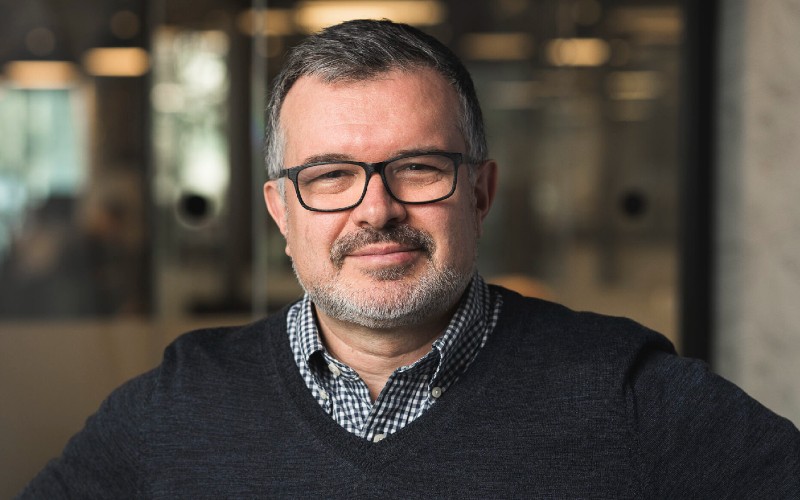The global out-of-home (OOH) advertising industry is undergoing a transformation – and VIOOH is pioneering the change.
The London startup, which featured in 14th spot in our MarTech 50 ranking this year, has developed a supply side platform connecting programmatic buyers and sellers in a premium marketplace – making outdoor advertising more accessible to brands.
Started by France-headquartered global OOH advertising giant JCDecaux – with a minority stake held by data specialist and modelling company Veltys – VIOOH launched in June 2018 with the aim of growing the OOH industry to compete with digital advertising such as search and mobile.
Jean-Christophe Conti, a former executive at Yahoo and AppNexus, was installed to head up the venture. “JCDecaux reached out to me with the opportunity, the goal and the ambition: being able to shift an established industry to embrace digital transformation is very interesting and motivating to me,” Conti tells BusinessCloud.
“They wanted someone who was well versed in programmatic advertising to structure it [as a business].”
Pandemic
When a global pandemic heaved into view, the programmatic advertising veteran had to be pragmatic. “It was not the perfect moment to launch an out-of-home advertising solution!” he acknowledges. “But equally, it demonstrated the demand from advertisers and brands for a flexible solution.
“Before, OOH advertising was booked in one simple way, through direct sales: you committed to buying screens or posters or frames for a set duration at a set price, and they would be reserved for that brand during that campaign.
“With a programmatic transaction, every time there is an impression available to be sold, there is a bid request and therefore a bid response – and if the advertiser wants to pause the campaign or change it, they have the capacity to do so.
“So in the context of lockdown, COVID was a formidable catalyst [for the OOH industry] to understand that programmatic trading was a good opportunity for them to continue their business with certainty.”
MarTech 50 – UK’s most innovative marketing technology creators
Data
Whereas with mobile and web advertising you can measure clicks – and see what users are posting on social media platforms – the data available to brands advertising out in the real world is very different.
“Because the screen is in the streets, you do not interact with it in the same way as one-to-one channels like mobile advertising: the level of data you’re going to get is going to be different. We do not manage personal user data,” says Conti.
“The audience data, which has been measured historically in the UK by Route, shows you how many people are going to be walking by your screen in the street at that moment in time during that day during that week. It takes into account factors such as the weather.
“Now, the second part of it is: who are these people? Men, women, age brackets… and what are they interested in? Do we have finance enthusiasts or coffee lovers here?
“What you have with programmatic OOH is the capacity to be relevant from a contextual standpoint, or from a location standpoint, or from a moment standpoint. You can say ‘the person on that mobile device is in location X at 7am for three or four days a week’. It’s a pattern. You can deduce that they live or work there. Perhaps that place matches with a point of interest, say a coffee shop.
“This is a good opportunity for the coffee franchise to engage with them – because the over-indexing of people who match that pattern is going to be an effective way to select which audience group is going to be more relevant for the coffee shop than others.”
He adds: “We can also begin to assess the likelihood of that mobile owner having seen an OOH ad because we know what was running on the OOH screen at that moment. There is no ad-blocker, no fraud, no brand safety challenges. So all in all, there are a lot of benefits to OOH that advertisers are starting to see.”
Global offer
Live in 19 territories with plans to enter Portugal, South Africa and mainland China this year, VIOOH works not only with JCDecaux but with all the media owners in the market including APG, Media Frankfurt, Framen, Media Transports and Tonic Media.
“We have to be seen as independent and trusted partners,” says Conti. “JCDecaux wanted to make sure that they contributed to a platform that will help the industry to shift in the proper manner.”
From the outset VIOOH has been a supply-side platform rather than demand-side, meaning it represents the interests of the OOH media owners rather than the brands seeking to advertise.
“I am only representing the interests of the media owner who is the publisher on the supply side, helping them to trade with the market, monetise to the best of their ability, and manage their inventory in a fair and sustainable way,” he continues.
“I do not represent the interest of the buyers because they are trying to buy the inventory they want at the cheapest price, while the sellers are trying to sell at the highest price. If the marketplace matching them tried to do both things at the same time, it would be very confusing!
“The programmatic media industry has been plagued by a lack of transparency. We had to learn from the mistakes that had gone before in other mediums as we leapfrogged the programmatic shift to drive more value for OOH. My point was clear on that – and I was very glad to see that JCDecaux were supportive of that.”
Confidentiality
Not only does VIOOH keep the inventory and price books confidential between competing digital media owners, but also between markets.
“We ensure absolute confidentiality for everybody working on the platform: for example JCDecaux in the UK doesn’t see the inventory, price book or data of JCDecaux in France,” says Conti.
“The media owner is fully in charge of how they sell and at what price. There is confidentiality all the way, and our processes are audited by PwC to provide an independent perspective.”
VIOOH is looking at developing an automated open exchange marketplace – similar in nature to the adverts you see inserted into online news articles – but so far has focused upon the more lucrative private marketplace model where buyers and sellers interact directly to agree advertising deals.
Conti says it was a challenge to convince the wider industry of the need for change. “We had a clear plan to help modernise the OOH industry. When you are looking at the reality… nobody was expecting us in the market and we had to work hard to start to change how it fundamentally transacts.
“Now I can say that VIOOH is growing year on year and the industry is moving towards a programmatic future.”


